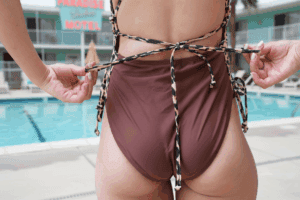Microneedling is the latest beauty trend. Find out everything you need before your first session.

For those looking to improve the look of scars, boost collagen or encourage hair growth in your receding hairline, microneedling might offer a minimally invasive solution.
The practice of microneedling isn’t a new trend. In fact, it started more than 20 years ago back in the 90s. Thanks to new developments in technology and its popularity on social media sites like YouTube, it’s set to be one of the hottest skincare trends of the year.
What is microneedling?
Microneedling is a treatment that involves inserting very tiny needles, no longer than 2.5 millimetres, using a special tool into the skin. The purpose of microneedling is to rejuvenate your skin. The most popular device for microneedling is called a dermaroller. The punctures are more like pin-pricks that only enter the first few layers of your skin.
Microneedling works instantly
After one microneedling session, your skin will look plump, pink and luminous for a few weeks. Over a period of four months, if you have one microneedling session a month, you can increase your collagen and elastin for up to six months after completing the treatment course.
Is microneedling painful?
Yes it does hurt. Depending on your pain threshold, the experience ranges from slight tingling to feeling as though a million needles are being inserted into your skin. If you’re worried about the pain, look for a treatment centre that will apply numbing cream before the treatment.
How does microneedling help with hair growth?
Microneedling stimulates hair follicles that have gone dormant. Because it has wound healing properties, it produces protein needed for the development of new hair follies. By stimulating blood circulation and sending more nutrients to your follicles, hair growth is encouraged.
Microneedling is not just for your face
This treatment can be done anywhere the skin on the body needs to be thickened, particularly in areas that have stretch marks or acne scars, like the legs, chest, or bum. It’s also a great treatment for repairing sun damage you might have on your arms, by stimulating collagen growth.
Too much of a good thing …
Frequent microneedling can lead to broken capillaries and predispose skin to a plastic look. Using a trusted serum while doing microneedling allows the serum to penetrate the skin, thus leading to better results and hopefully fewer microneedling sessions. It’s also important to stick to a once-a-month plan and always allow time for full recovery between roll sessions.
Unfortunately it’s not for everyone
Microneedling isn’t suggested for people who have diabetes due to potential delayed wound healing from the process. This may increase your risk of secondary infection post needling. Having a history of allergies may mean that microneedling isn’t for you due to the upregulation of histamine production after a session. This could lead to urticaria (hives) that can itch for days.
Brought to you by All4Women






